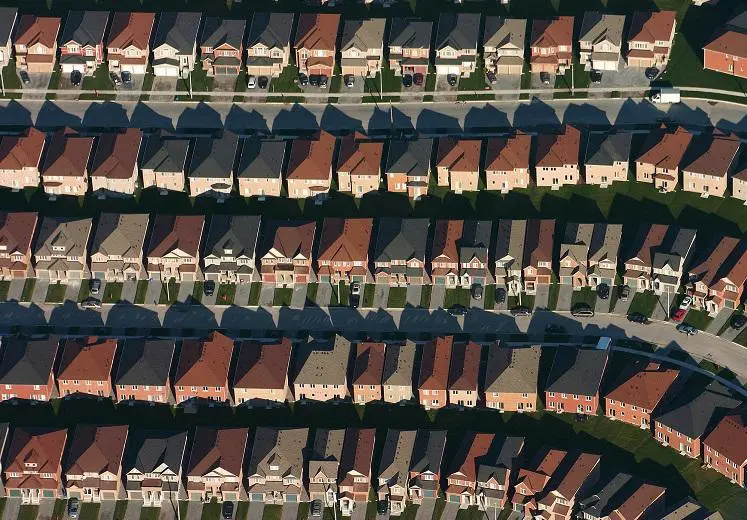Home truths

A new paper finds empty houses and longer commutes are two of the consequences of a planning-induced housing shortage in Britain that has been brewing for decades.
King Henry VIII’s Mound in Richmond Park, south west London, offers one of London’s most striking panoramas; an unimpeded view of many of the capital’s landmarks towards the dome of St Paul’s Cathedral 16 kilometres away.
The pristine view across London’s skyline is not a coincidence; Richmond has the privilege of being situated at the end of one of London’s eight ‘protected view corridors’. This viewing corridor dates back to 1710, originally laid out as an entertaining feature of the park. Formal protection was granted from 1888, ruling that structures in London should not be higher than a fireman’s ladder – roughly ten floors.
The eight corridors preventing the obstruction of the view of St. Paul’s Cathedral were imposed during the 1930s, established initially as a gentlemen’s agreement between the City of London Corporation and developers. Today, the view corridor prevents redevelopment of some of the most valuable real estate in the world, not only in the actual 16km-view corridor but also in the Cathedral’s backdrop.
London’s protected views and various other height restrictions explain why some of the world’s most expensive land has relatively few skyscrapers. But while protected views may be popular amongst Richmond’s residents, it is a contributing factor to the blockage on building new homes that had led to a severe housing shortage developing in the capital in recent decades.
View corridors and height restrictions are only one example of how the UK’s planning laws impede new housing supply. In a recent analysis, Professor Christian Hilber and his co-authors Professor Paul Cheshire and Dr Hans Koster quantified the general effects of the UK’s planning laws on the number of empty houses (conditional on housing demand , which is an indication of the suitability of the housing stock), and the length of people’s commute to work.
The researchers conducted a regression analysis, which takes account of all the factors that influence people’s decisions on where they live. They found that a one standard deviation increase in local regulatory restrictiveness (an increase of 53% relative to the average restrictiveness) adds an extra 6% to the people’s commuting distances, and nearly 1% to the overall housing vacancy rate (an increase of 23% relative to average local vacancy rate).
Housing is also expensive. The average private rent in London accounts for more than a third of household income, while home owning, especially amongst the young, has become increasingly unaffordable and has declined rapidly in recent decades.
Professor Hilber says: "Much of London has a deadlock on development. When you cannot build new housing or knock down and redevelop buildings at higher density, property prices will increase because there isn’t enough new supply to meet demand."
In addition to the view corridors, Professor Hilber identifies height restrictions and excessive historic preservation policies, as crucial cause of the housing shortage. Also, the tightly controlled ‘greenbelt’ surrounding the capital’s perimeter is designed to prevent urban sprawl. The huge swath of land, 3.3 times the size of greater London, is undeveloped and to a good extent used for intensive agriculture or golf courses.
Housing is therefore more expensive, with more affordable housing available only outside the greenbelt, forcing many young people to commute long distances across it to reach their workplaces in central London.
Professor Hilber challenges the common perception that the greenbelt is mostly parks and woodlands. "People are often instinctively opposed to building on greenbelt land. But this is typically because they misunderstand what it is. It isn’t really used much for recreation, and low density housing has a much lower environmental impact than intensive farming."
The design of the UK’s planning system also makes it difficult to secure permission to build housing. Professor Hilber says: "Planning is managed by the local authority and the local residents, who behave as NIMBYs and typically resist development. It’s a much smoother process in France and Switzerland, where large areas of open land are set aside in residential zones specifically for housing construction."
But the problem is not just the UK’s planning laws. The British tax system also acts as a disincentive for councils to build housing. Professor Hilber says: "Council tax is the only local source of revenue and it is a small source of revenue, which means that a council’s revenues will not increase significantly if they build more houses and increase the population.
"Yet councils have to provide local infrastructure and local residents have to deal with congested roads and bursting local public schools. The pressure population growth puts on local public services and social care budgets means that councils and local residents are reluctant to allow it."
Professor Hilber says that criticism of developers for their failure to build more housing misses the target. "Housing developers take a lot of flak. But it is the restrictive planning system that creates scarcity of developable land and increases the volatility of land prices. And it is this increase in price volatility that makes the ‘real option’ to hold on to scarce parcels of undeveloped land with planning permission extremely valuable."
"Put differently, it is not greedy developers, but the UK’s restrictive planning laws are ultimately responsible for the lack of house building."
Professor Hilber adds that ambitious reforms to the UK’s planning and tax systems are crucial to addressing decades of inadequate housebuilding. "If the UK’s policy makers are really serious about solving the housing affordability crisis, they need to allow cities to renew themselves, grow vertically and, perhaps most importantly, grow horizontally.
"This means accepting that the greenbelt is not always off limits. We need to designate suitable areas close to existing transport infrastructure within it for residential development."